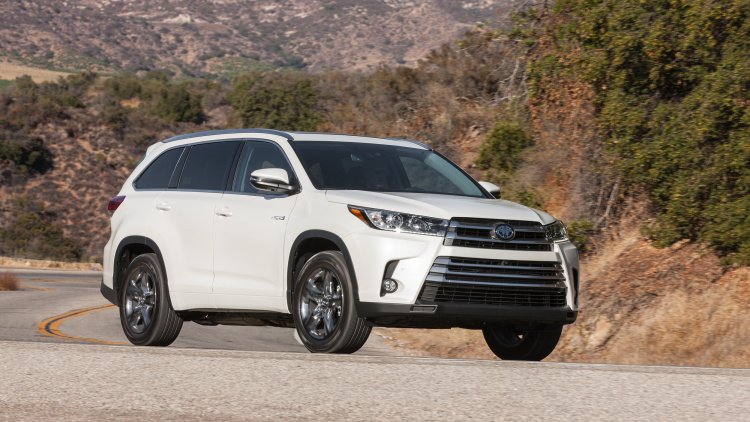2017 Highlander will be first NA Toyota to get stop-start

It's the debut of a relatively simple technology called stop-start, which can shut off the engine when the vehicle isn't moving. Other automakers have been doing this for years - and Toyota's hybrids obviously have it, in a sense – but this a new thing for Toyota. Before we get to that, though, let's set the stage.
There are four engines (or engine variants) used in the various versions of the 2017 Highlander:
- A 2.7-liter 4-cylinder Dual Overhead Cam (DOHC) Dual VVT-i offering 185 HP at 5,800 rpm and 184 lb.-ft. of torque at 4,200 rpm. This carryover engine will only be used in the gas-powered 4-cylinder LE trim.
- A 3.5-liter V6 DOHC Atkinson Cycle-capable Dual VVT-iW/VVT-i engine which offers 295 HP at 6,600 rpm and 263 lb.-ft. of torque at 4,700 rpm. This is the engine in the gas-powered LE trim.
- Another 3.5-liter V6, which is the same as the one above, but adds a stop-start system. This will be standard on the LE Plus, XLE, SE, Limited, and Limited Platinum trim.
- A 3.5-liter V6 Atkinson cycle engine with Dual VVT-i offering 306 total horsepower. This is the engine used on all hybrid trim levels: Hybrid LE, LE Plus, XLE Hybrid, Limited, Limited Hybrid, and Platinum Hybrid.
In case you were wondering why use an "Atkinson-cycle capable" engine, Toyota's Brian Williams said that while Atkinson-cycle engines are usually used with hybrids, in the new Highlander, the engine gets a fuel-efficiency benefit when used in Atkinson mode, but then shifts to Otto mode for more power when needed. This provides the benefits of quicker warm-up and quieter operation at low speed, along with more power and lower emissions. For more on the differences between the two cycles, read this.
The start-stop system is perhaps the most interesting addition to the new Highlander's powertrain. The 2017 Highlander is the first North American Toyota product to get stop-start. Williams said that Toyota expects about 85 percent of all 2017 Highlanders will get it, because internal projections suggest that about eight percent of all Highlanders sold this year will be the LE trim and seven percent will be hybrids. That seven percent, by the way, is up from about three percent for the 2016 Highlanders.
After shutting the engine off, the stop-start system is still able to provide electrical power to an equipped Highlander for two-to-three minutes at a stop light, Williams said. It is turned on by default with every ignition cycle, but customers can turn it off with the push of a button. There are certain conditions in which stop-start won't come on – if the AC is turned on to the maximum or if you're on a grade higher than eight degrees (Toyota didn't want to risk the vacuum brakes failing) – but Williams said that Toyota thinks most customers will just leave it on all the time. Williams said that by making start-stop the default setting, the Highlander gets a one-mile-per-gallon boost on its EPA fuel economy rating.
Looking down the road, Williams said that more Toyota vehicles will get stop-start technology in the future, but he wouldn't divulge which ones other than to say it will probably be the company's larger vehicles – SUVs, CUVs, and trucks – because those are, "the ones that could benefit a little bit more from it." The 2018 Sienna sure seems like a likely target.
Related News


